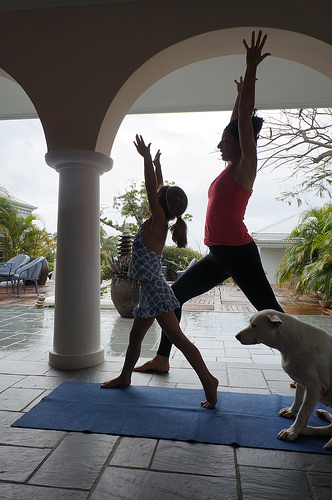
We’re up to Chapter 20 in my book, “Stretched, Build Your Yoga Business, Grow Your Teaching Techniques.” This chapter is called, Teaching Children’s Yoga.” I’ve been teaching kids for over 10 years and it never gets old. Even on days when I head into the studio and I’m tired or distracted, working with children brings me so much joy! They are open, full of energy, totally present and willing to try anything. There is such inspiration to be found in working with children. The contents of this chapter form the basis for my two hour training module on working with children. Although I love to provide this content in person, just as with my mentorship modules, I wanted to share all of it with you in the book as well.
In this chapter, I start out with the basis why we would want to teach yoga to kids in the first place. There’s plenty for them to do in terms of physical exercise. Why yoga? That’s explained in more detail. I then go into the elements of yoga for kids, of any age, which oddly enough, are not unlike what you’d focus on for adults. They include elements of breathing, strengthening/energizing, balancing, stretching/lengthening, awareness/focus, flowing/connecting/integrating and meditation/ centering/ relaxing/slowing down. I explain each characteristic and apply it to the different age groups.
I give you a supply list of items that are helpful to have when teaching kids. I’ve had a big box of these items for years and it makes preparing so much easier and faster. The chapter then breaks down yoga activities by age group, starting with a list of things to do with kids Toddler to 3 years of age and proceeding up to college aged students. I then go into “Considerations for the Teacher;” things like “Managing children that pick on other kids,” or “Being a Role Model.” I then go into a short list of “Things to Avoid when Teaching Children,” which include things like headstands for young kids or pulling on their arms and legs.
The chapter ends with actual lesson plans you can use. Just as with teaching adults, you need a sequence. This is so critical with kids because, depending on their age, their attention span is short and your job is to keep things moving! This isn’t a time for you to struggle to think of what you want to offer next. As long as I’ve been teaching kids, I always have a lesson plan in front of me and I go through it, for the most part, item by item. I might expand on something, add something or take something out but I always have it. With children there is A LOT to manage and you’ll need and appreciate  that you have a cheat sheet in front of you to keep you and the class on track.
With kids, remember always that you are not there to teach them how to do the poses perfectly. In fact, many of the activities I include are not based in poses per se, but in movement. You’re there to support them in their expression of the pose and the movement. There is nothing more frustrating than the times I have taught children and nearby parents, teachers or assistants have spent time correcting them. This happens all the time. I suggest the movement or pose and then let it be. It doesn’t matter what it looks like! Your job is to help kids tap into their own expression, strength and creativity.
If you’ve been teaching adults for some time, this chapter will give you the foundation to begin teaching children. If you’re a childhood educator, especially a physical education teacher, this will help you get started with adding yoga based activities into your lesson plans. If you’re thinking about teaching kids, this is a great springboard to learning the basics.
Next Up: Teaching Private Yoga Sessions.
